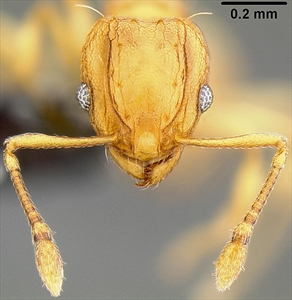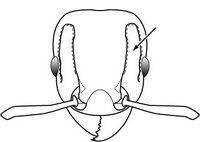- Worldwide. A major pest; it forms super-colonies.
- Golden brown, 1.5 mm with painful sting. Nests under leaf litter, wood, in tree forks, with queens, workers, pupae and eggs. Eats many kinds of foods, and that is part of its success. A problem for workers in food gardens and plantations.
- Spreads in floating debris, in soil, and in the plant and log trades.
- Biosecurity: define risk, and have rapid response plan should an introduction occur.
- Chemical control: three types are used: (i) stomach poisons; (ii) growth regulators; (iii) neurotoxins. See IUCN/SSC website for details of eradication and management.











